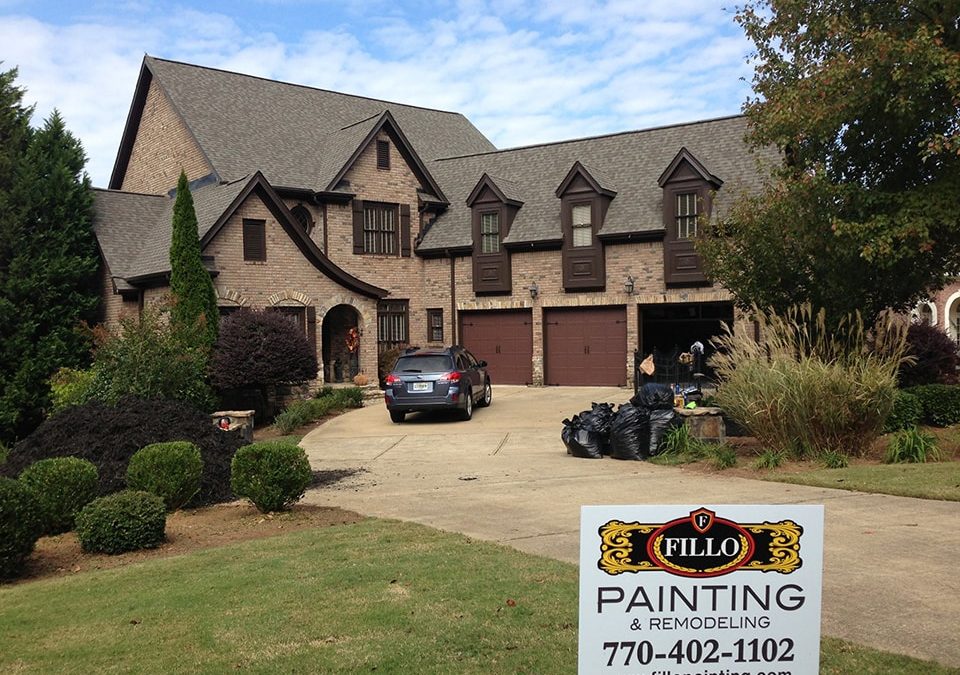Whether you prefer to hire professionals for your residential painting needs or take a more do-it-yourself approach, there’s no doubt painting over masonry offers some specific challenges that make it different from any other exterior surface. Exterior painters in Roswell, GA, know that jobs involving brick require additional surface prep and care when priming and painting, but there are other ways that painting over masonry of any type requires specialized knowledge and skill.
However, just because it’s different from painting wood doesn’t mean that it’s inherently more difficult. In fact, masonry can be painted to produce beautiful results when the job is properly executed, and the right steps are followed. If you’re planning on painting a masonry surface, it’s a good idea to familiarize yourself with the process and specific considerations involved in painting masonry before hiring a residential painting company. Keep reading to learn what you need to know about painting on masonry surfaces.
It’s Permanent
Though you may love the look of a neighboring house that was recently painted white with natural wood shutters, that doesn’t necessarily mean that you should break out the paintbrush and get to work immediately to mimic that style. One important thing to remember when deciding whether to paint on your brick is that it will be a permanent change for the most part. Once the brick is painted, it’s difficult to remove that paint completely. Therefore, painting brick requires a confident commitment. Remember that when weighing the pros and cons because while the look of painted brick may be alluring, the maintenance-free nature of natural brick is attractive as well.
Water Damage and Dampness Must Be Remedied First
Another factor to consider is the effect of water on painted masonry. Painting over masonry that is already damp will seal the moisture in the brick or concrete. That could have long-lasting negative implications for your home, so it’s important that you root out any potential causes of excess moisture or water damage in the brick or concrete. Look for areas that appear damp, peeling paint, and algae growth. If you find evidence of water damage, make sure that you locate the source and fix it before painting. Also, if you wash your brick before painting as part of the surface prep, make sure that you allow 24 to 48 hours before painting to give the masonry time to dry.
Efflorescence Can Ruin Your Paint
While most homeowners probably have no idea what efflorescence is, they can see the damage it does when it’s not removed prior to painting masonry. Both bricks and mortar contain salts that are water-soluble. When the water dries, those salts leach out onto the surface of the bricks, which results in a fine powder that can prevent proper paint adhesion and significantly shorten the lifespan of your paint job. Therefore, before applying the sealer, primer, or paint, the walls should be inspected and thoroughly cleaned to remove any particulate matter or organic debris.
Saponification Can Destroy Your Paint
Yet another term that most homeowners have never heard is saponification. This reaction occurs alkaline salts in the mortar begins to leach out beneath the paint. Those alkalis begin to break down oil-based paints, which in turn causes the paint film to break down and degrade, thus shortening its lifespan. The best way to prevent saponification caused by alkali issues in brick mortar is to use an alkali-resistant primer prior to painting.
Painting Masonry Is an Ongoing Commitment
When deciding whether to paint your masonry, it’s important to remember that it’s not a one-off endeavor. While brick is largely maintenance-free when left in its natural state, once painted, it becomes like any other exterior surface and must be painted regularly to preserve a maintained appearance. Just as paint on wood surfaces degrades from exposure to UV light and the elements, so too will painted masonry require periodic maintenance.
If you plan to hire an exterior painting company in Roswell, GA, or take a do-it-yourself approach to painting masonry, there are a few important factors to consider before taking the leap. By understanding these dynamics that are unique to painting on masonry, you can get a better feel for what’s required to get the best possible results. To learn more about painting masonry surfaces on your home’s exterior, contact Fillo Painting at (770) 407-5121.

